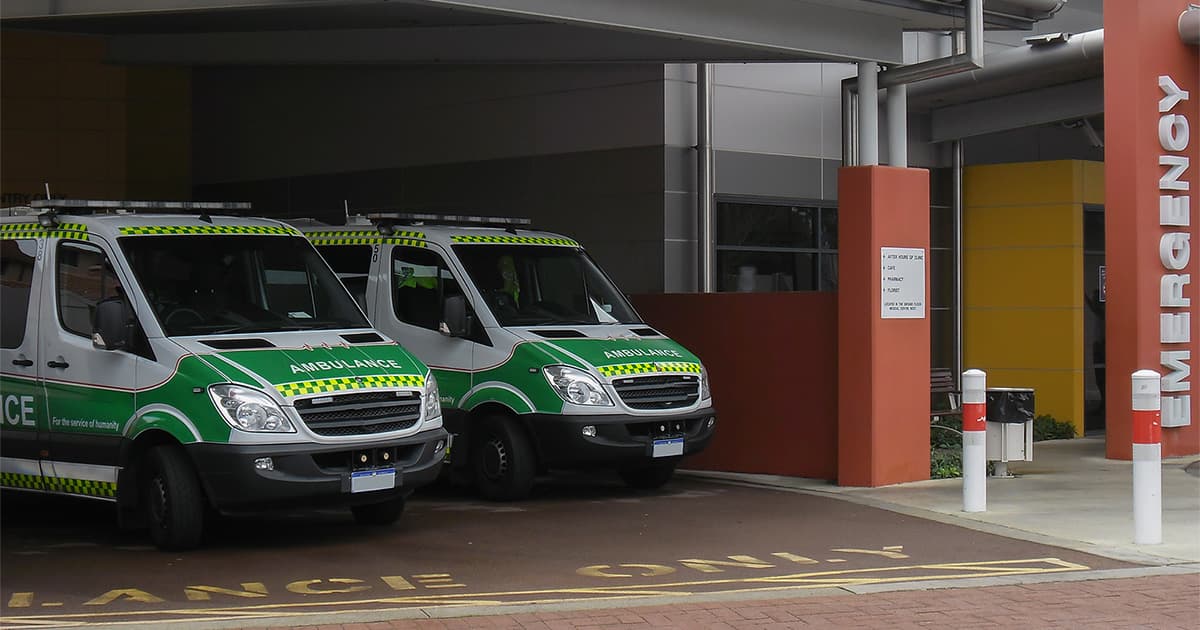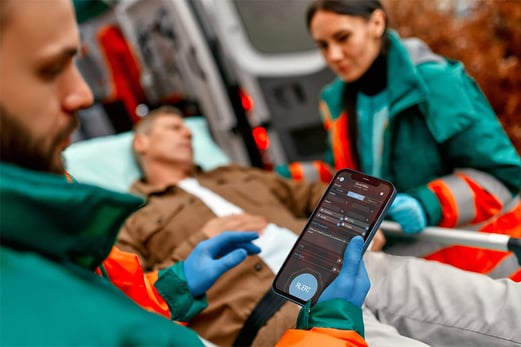Baker to Vegas: Leveraging Pulsara to Manage a Planned Event
Although they have the advantage of prior awareness and preparation, large-scale planned events pose unique challenges for emergency management...
3 min read
 Kinsie Clarkson
:
Aug 10, 2022
Kinsie Clarkson
:
Aug 10, 2022

A recent study published in the Medical Journal of Australia shows that longer ambulance offload times are associated with greater 30-day risks of death and ambulance re-attendance for people presenting to the emergency department with chest pain.
The large population-based study analyzed a sample of patients who arrived at the ED with non-traumatic chest pain. The goal was to assess whether ambulance offload time "influenced the risks of death or ambulance re-attendance with chest pain within 30 days of the initial ED presentation.”
According to the study, increases in offload times have a direct impact on the outcomes of patients experiencing time-sensitive ailments—specifically chest pain symptoms, which may indicate a variety of cardiac issues. As a result, the study's authors recommend that "Improving the speed of ambulance-to-ED transfers is urgently required.”
We found that longer ED offload time was associated with greater 30-day risk of death and ambulance re-attendance for patients with chest pain. About 51,000 people with chest pain were transported to Victorian EDs in 2018, and in 70% of cases the offload time exceeded 17 minutes. Offload times of 18–28 minutes were associated with numbers needed to harm of 769 for death and 238 for re-attendance within 30 days; for offload times greater than 28 minutes, the numbers were 357 (death) and 115 treated patients (re-attendance). This is equivalent to about 70 preventable deaths and 225 preventable re-attendances by patients with chest pain.
The authors summarized the conclusion of their findings as follows:
The known: Delays in ambulance offload are associated with poorer ambulance response times and longer admissions, but their impact on clinical outcomes for patients is less clear.
The new: In a population-based study of adults with chest pain taken by ambulance to Victorian emergency departments, longer ambulance offload times were associated with greater 30-day risks of death and repeated need for ambulance transport for emergency assessment.
The implications: The increasing length of ambulance-to-emergency department transfers in Australia requires urgent attention to reduce the risk of poor outcomes for people with chest pain.
Over the past two years, ambulance offload delays at hospitals have become a major issue for many countries, including Australia, the United States, the United Kingdom, and Canada. The pandemic exacerbated pre-existing capacity issues, took a toll on staffing, and caused many patients to defer care. And in Australia, emergency cases have continued to rise each year. Overcrowded emergency departments have also contributed to the issue, among a number of other factors.
The result has been a phenomenon where ambulances arrive at the hospital with a patient, only to sit and wait until the hospital can take the patient, increasing the time it takes to offload patients. The study comes after multiple reports about the high numbers of ambulances experiencing offload delays at hospitals across Australia.
Ambulance offload time is a complex issue. Many factors contribute to the situation, and many factors will need to contribute to the solution. But as the authors of the study stated, "improving the speed of ambulance-to-ED transfers is urgently required.”
One approach being used to help address this issue successfully is streamlining communication between ambulance services and the hospital. Communication solutions that leverage mobile technology can help paramedics provide clear, detailed information about their patients to the hospital before arrival, giving hospital teams time to prepare before the patients arrive.
Ambulance Victoria and Latrobe Regional Hospital have adopted one such solution: Pulsara. “Pulsara has made a massive difference in communication for all of our workflows,” stated Janet May, Stroke Coordinator at Latrobe Regional Hospital, which is located in Melbourne, Australia. “It gets the right information to the right care team members at the right time, allowing us to adequately prepare for a variety of patient cases."
Pulsara is a healthcare communication and logistics platform that unites the entire care team on one unified communication channel, from prehospital providers to specialty teams at the hospital. With Pulsara, clinicians start a dedicated communication channel for each patient, enter vital information, communicate with text, images, and video conferencing, and instantly alert the hospital and downstream care teams.

The platform allows ambulance services to send more detailed patient information to the hospital before they arrive. This enables the hospital not only to be aware that the patient is coming, but also to have access to critical information about the patient’s vitals and condition, helping them determine how to prioritize the patient upon arrival. Paramedics can even transmit an ECG to hospital teams instantly, helping speed the decision-making process for the cardiac team and transport the patient to the right form of care immediately.
“It's just a much better system than what we were using,” shared Grant Hocking, Regional Improvement Lead for Grampians Region Operational Improvement, Ambulance Victoria, Australia. “At Ambulance Victoria, we were getting patients off stretchers five minutes quicker than without Pulsara. We were clearing hospitals 10 minutes quicker than without Pulsara. So on our side of things, that made a huge difference.”
By providing more detailed information to the hospital sooner, paramedics can give hospital teams more time to evaluate the situation and prepare for incoming patients. Even amid an influx of ambulances, hospital teams have access to information that can help them triage patients faster and coordinate care where it's needed most.
Though improving communication alone can't solve all the factors that contribute to increased ambulance offload times, it's one practical and demonstrated course of action that can help improve offload times.
![]()
A new study published in the BMJ found that the use of Pulsara led to shorter timelines in the care of patients with suspected stroke and STEMI. Read the full study here.

Although they have the advantage of prior awareness and preparation, large-scale planned events pose unique challenges for emergency management...

For Those Who Love a Good "Oopsie!" At Pulsara, we pride ourselves on enabling secure, HIPAA-compliant communication for healthcare teams. But let’s...

March Recap A New Integration: Improving Data Management, Streamlining Workflows, and Improving Care CoordinationOnly a few days ago, we announced...